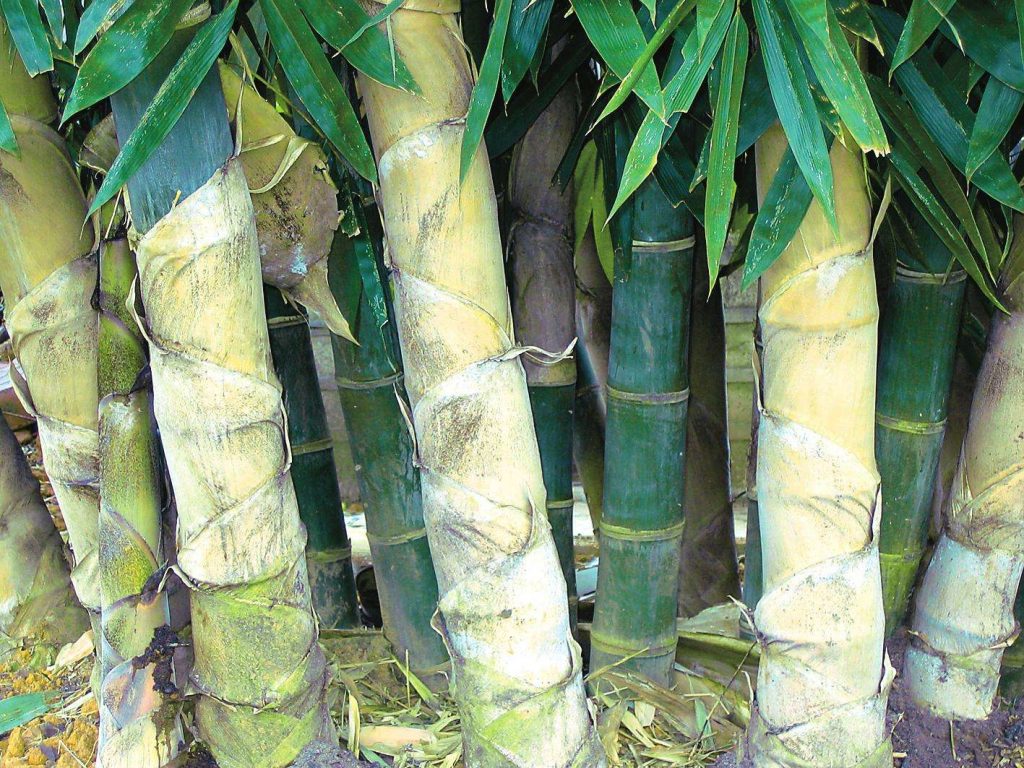Dendrocalamus giganteus seed

Dendrocalamus giganteus giant bamboo
Dendrocalamus giganteus, also known as Giant Bamboo or Dragon Bamboo, is a giant tropical and subtropical clumping species native to Myanmar (Burma), Bhutan, china and Thailand. It is considered the tallest bamboo in the world.
Dendrocalamus giganteus
Height 25 – 35 m
Diameter 15 – 30 cm
Growth Habit Dense Clumping
Climate Tropical – Subtropical
Hardiness -1°C
Origin Southeast Asia
Culms: Dendrocalamus giganteus is the tallest of all bamboos with gigantic large culms between 25-35 m tall and 15-30 cm in diameter. Culms are thick-walled (2-2.5 cm), dull green to dark bluish green and covered with a white waxy crust when young. Internodes are usually 35-45 cm long, and with roost scars on the lower nodes.
Branches: Many clustered branches with 1 larger dominant branch.
Leaves: Leaves are variable in size, but can be from 15-50 cm in length and between 3-10 cm wide.
Seeds: Flowering cycle and seed-setting is reported to be about every 40 years for Dendrocalamus giganteus.
Habitat: Giant Bamboo occurs naturally in humid tropical highlands or hill slopes, usually up to 1,200 m altitude. It can be grown successfully in lowlands on rich loam or alluvial soils, where humidity is high.
Uses: Dendrocalamus giganteus is one among the twelve high yielding bamboos worth raising as a large scale bamboo plantation, as it is very good for construction, paper production and young shoots are good for Vegetable products. Culms are also used for scaffolding, boat masts, rural housing, water pipes, vases, buckets, water pitchers, matting, boards and parquet, furniture, water pots. Culm sheaths are used to make hats.
Biomass: This bamboo species produces a large amount of biomass. It can give an annual yield of 20 to 30 t/ha, which is 2.7 times more than that of Dendrocalamus latiflorus.
Germination Guide:
Seed Treatment:
- Rinse seeds with clean water.
- Soak seeds for 5 minutes in 10% salt water solution. Rinse.
- Soak seeds for 15 minutes in clean water.
Sowing:
- Use a 50/50 mix of perlite and peat/sphagnum moss, moistened to the point where you can barely squeeze water out of it. You can either mix this yourself or buy it pre-mixed at any local garden center. Do not use all your mix.
- Place soil mixture in either a 1020 flat w/ humidity dome or I have also used a plastic Tupperware style sweater box with lid.
- Scatter seeds randomly or place them in rows in the mix…it’s up to you.
- Cover lightly with remaining soil mix and place cover on flat.
- Lid should keep moisture high. Open once or twice a week to allow fresh air in and check soil moisture. If dry, gently mist with clean water.
OR:
- Moist a paper towel to the point where you can barely squeeze water out of it.
- Lay seeds on the paper towel.
- Fold the paper towel and carefully slip the paper towel into the plastic bag. Seal the bag completely.
3.Store the plastic bag in a light, warm place until seeds germinate.Remove the seeds to individual peat pots after they’ve grown their roots.
Germination and Seedling care:
- You should begin seeing germination occur within 2 to 4 weeks.
- Keep cover on for another week to keep humidity up and enhance seed germination. Once seedlings begin to reach the top of the cover remove cover.
- Seeds will continue to germinate for upwards to 4 weeks after you see the first seed germinate.
- Your new bamboo seedlings will grow to approximately 4 inches in the first month.
- After the first month you can begin applications of an all purpose fertilizer. For this I mix Miracle Grow plant food into spray bottle and gently mist them thoroughly.
- Depending on what container you used to germinate your seeds in, you can transplant the new seedlings safely after the first month. I have been putting all mine into 4″ round pots.
- When new seedlings are about 2 to 3 months old they will begin to send up new shoots.
- 1 year old seedlings will vary in height between 1 to 2 feet.
